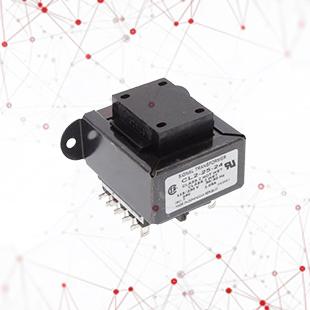
IZZITION E-TECHNOLOGY is recognized as a leading distributor of electronic components, known for its reliability and extensive industry expertise. Our company is at the forefront of supplying a comprehensive range of Transformers, sourced from renowned manufacturers such as ABB, Siemens, and Schneider Electric.
Transformers are pivotal devices in electrical engineering used to transfer electrical energy between circuits through electromagnetic induction. Their primary function is to change the voltage levels between circuits, enabling efficient power distribution and utilization. By adjusting voltage levels, transformers enhance the safety and efficiency of power systems, facilitating their use across various electrical applications.
The basic operating principle of transformers involves the use of two or more winding coils placed on a magnetic core. When an alternating current flows through the primary coil, it creates a magnetic field that induces a voltage in the secondary coil. This voltage can be "stepped up" or "stepped down" depending on the turn ratio of the coils, allowing for control over the output voltage relative to the input.
There are several major types of Transformers, each designed for specific applications:
Power Transformers: These are used in transmission networks to step-up (increase) or step-down (decrease) voltage levels. They are essential for efficient power distribution over long distances and help minimize energy loss during transmission.
Distribution Transformers: Typically found in residential areas, these transformers step down the voltage used in transmission lines to levels suitable for home and business use. They are designed to deliver electricity at safe, usable voltages and handle varying load demands.
Isolation Transformers: Used to decouple two circuits, isolation transformers provide electrical isolation to enhance safety and reduce noise interference. They are crucial in medical, industrial, and telecommunication applications where protection from electrical faults is needed.
Instrument Transformers: Including current and voltage transformers, these are used for measuring and protection purposes in electrical power systems. They help in safely monitoring high voltage and current levels by stepping them down to measurable values.
Autotransformers: With a single, continuous winding, autotransformers are more compact and economical for low voltage applications. They are commonly used in applications requiring variable line voltages.
Energy Sector: In power generation and distribution, transformers are key to scaling voltages up or down in power grids, enhancing long-distance transmission efficiency, and reducing losses. They ensure that the generated power meets local voltage requirements and is delivered safely to end users.
Industrial Automation: Transformers play a vital role in providing isolated power supplies, safe operation of heavy machinery, and maintaining integrity of automation systems through voltage regulation and power conditioning features.
Telecommunications: In telecommunications infrastructure, transformers ensure stable power supply to network towers and data centers. Their role in reducing electrical noise and isolating components enhances signal clarity and equipment longevity.
Building Services: In commercial and residential buildings, transformers enable the distribution of appropriate voltage levels for lighting, heating, and electrical appliances, ensuring safety and operational efficiency across different electrical systems.
Renewable Energy: Transformers are crucial in integrating renewable energy sources like wind and solar into the grid. They help in adjusting voltage levels of generated power before it’s fed into the main grid, facilitating seamless energy flow and maximizing utilization.